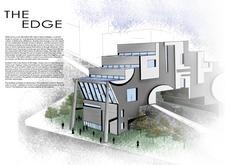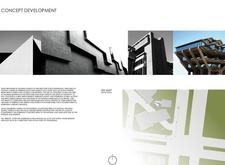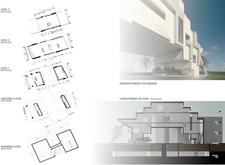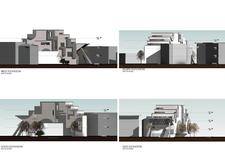5 key facts about this project
At the foundation of the project is a clear architectural vision that transcends mere aesthetics. The design approach prioritizes sustainable practices, emphasizing materials that not only address environmental concerns but also enhance the structure's connection to its surroundings. A careful selection of materials, including concrete, glass, wood, and metal, plays a vital role in shaping both the interior and exterior spaces. The use of concrete provides robustness, while the extensive use of glass facilitates a relationship between indoor environments and the natural world, allowing for ample natural light to permeate the building. The warm tones of wood add a comforting touch, creating spaces that feel both inviting and functional.
One of the noteworthy aspects of the design is its commitment to creating fluid, interconnected spaces that can adapt to the changing needs of its users. The layout encourages movement through open plans that facilitate easy navigation and engagement. Pockets of versatility are embedded throughout the project, accommodating events, exhibitions, and casual gatherings that foster a sense of community. This adaptability is not only functional but is also emblematic of contemporary architectural thought, where spaces are designed to evolve in response to user demands.
The project also exhibits a sensitivity to its geographical context. By considering local climate patterns, the design incorporates features that optimize energy efficiency and promote sustainability. This includes strategically placed overhangs that offer shade, minimizing heat gain during the warmer months, while large windows ensure that the interiors remain light and airy. These design elements demonstrate a pragmatic approach to architecture, where functionality and environmental stewardship go hand in hand.
Unique to the design is its thoughtful integration of outdoor and indoor spaces, blurring the lines between the two. Landscaped areas serve as extensions of the interior, enhancing not only the aesthetic quality but also the ecological footprint of the project. This harmonious interaction invites the natural environment into the building’s core, fostering a tranquil atmosphere for users. It is a reminder of how architecture can enhance everyday life by creating spaces that nurture both social interaction and personal reflection.
The architectural language of the project reflects contemporary trends while maintaining respect for its surroundings. Clean lines, a disciplined material palette, and a focus on craftsmanship manifest in every detail, from the structural elements to the finishing touches. This attention to detail is what makes the architecture relatable and relevant, allowing it to resonate with both local traditions and modern expectations.
As readers explore this architectural project, they are encouraged to delve deeper into the intricacies of the design by reviewing the architectural plans, sections, and overall architectural ideas presented. These elements reveal the careful considerations and design processes that have culminated in this significant project within its community context. The thoughtful interplay between form and function is evident throughout, inviting further exploration into how this architectural endeavor enhances the experience of its users and contributes to the broader architectural landscape.


























